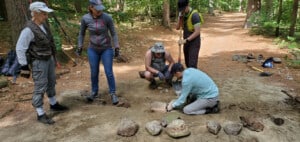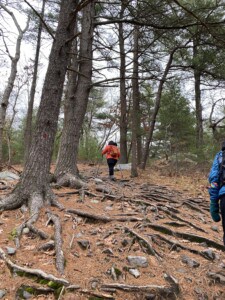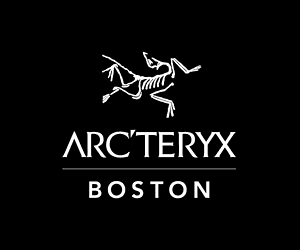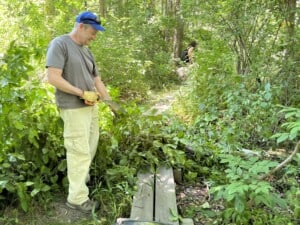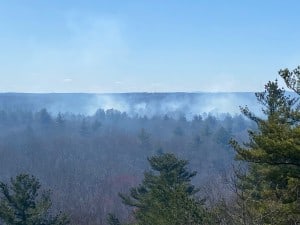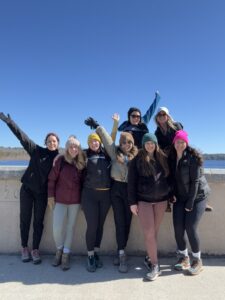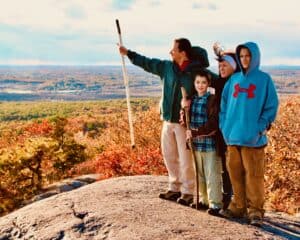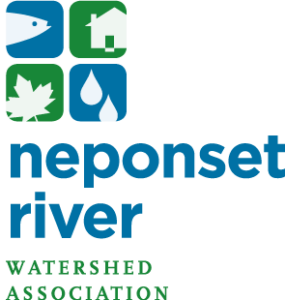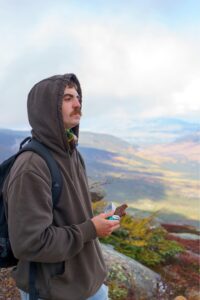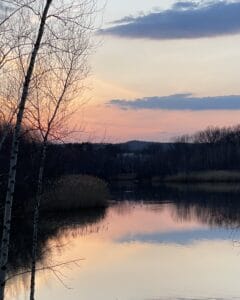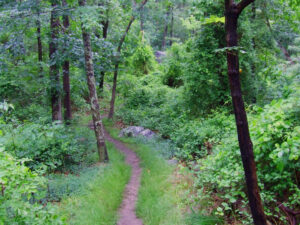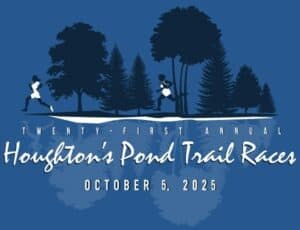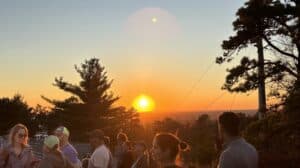Indian Line Farm Protected!
Because Indian Line Farm is not easily accessible and has no close parking, the site is often seen as perfect for development. For example, in 2008 there was a proposal to build an office complex on this part of the park. This year, the Department of Conservation and Recreation included Indian Line Farm as one of four sites on which it wanted to build a skating rink. While we were told that Indian Line Farm was originally the preferred site, thanks to our members advocacy and support, Indian Line Farm is now safe (for now) and the current plans are to build the skating rink on the site of the original rink at Ponkapoag Golf Course.
While the park is not used by humans, it is enjoyed by many species, particularly birds and pollinators who take advantage of the farm’s rare meadow habitat. In a community meeting that the Friends of the Blue Hills organized in 2009, over 70 participants brainstormed uses for the park; the overwhelming consensus was to keep the park open to the public and protected for wildlife.
While this portion of the park is safe for now, we know that it is just a matter of time before the next threat. A big thank you to Friends of the Blue Hills members for their advocacy to protect the park.
If you would like to make sure parts of the the Blue Hills like Indian Line Farm are not developed… please consider supporting the Friends!
History
The name of the farm comes from being the northern border line of Ponkapoag Plantation, a grant of 6,000 acres given to the Ponkapoag Tribe in 1657, through the labors of Rev. John Eliot. It was to be the second “praying town” in the area for this small tribe of Christianized Indians (Natick was the first). Although the actual village was somewhere near modern Canton Corner, the Indians farmed this land for corn, and also harvested and manufactured cedar shingles sold to the English at the time. The last piece of Indian land was sold off in 1827. As recently as 150 years ago, the census reported that about 15-20 of the Ponkapoag tribe were remaining on the land.
In the 1920s, the land, then owned by prominent Boston realtor C.W. Whittier, became a prosperous dairy farm. In the 1940s, Tobe Deutschmann, a founder of the Radio Shack electronics chain, purchased the farm. About this time, the Metropolitan District Commission (MDC) took the back pastures toward Ponkapoag Pond, by eminent domain, to expand Ponkapoag Golf Course.
Deutschmann attempted various times in the 1950s to develop the land into a shopping mall, each time defeated by the town of Canton. He did use the land to run a locally-famous roadside diner known for its neon Indian totem signage, and, later, a farm stand. Deutschmann’s on-site experimentation in the barns with electronics led to chemical contamination of parts of the site. In 1984, the Commonwealth bought the site, managing it through the MDC (now DCR) as part of the Blue Hills Reservation. In 2006, the Commonwealth completed its cleanup of the site. Since then, the land has lay quietly fallow, becoming home once again to the many flora and fauna of the area.
Natural Riches
The site is primarily made up of three types of terrain. The publicly-visible meadowland of the former farm and pastures that borders Route 138 comprises about a third of the parcel. The open pine forest between the meadows and the golf course and the dense brushland and hardwood forest areas to the south of the parcel comprise the remainder.
When exploring the site, you can find the turn-of-the-century borders of the Whittier farm pastures, where the extensive network of tightly-laid lichen-encrusted stone walls winding through areas are now overtaken by forests and fields. Remnants of orchard plantings and old outbuilding foundations, where ground-nesting birds have made homes, are scattered around the site.
Learn more about Farnham-Connolly Memorial Park.




